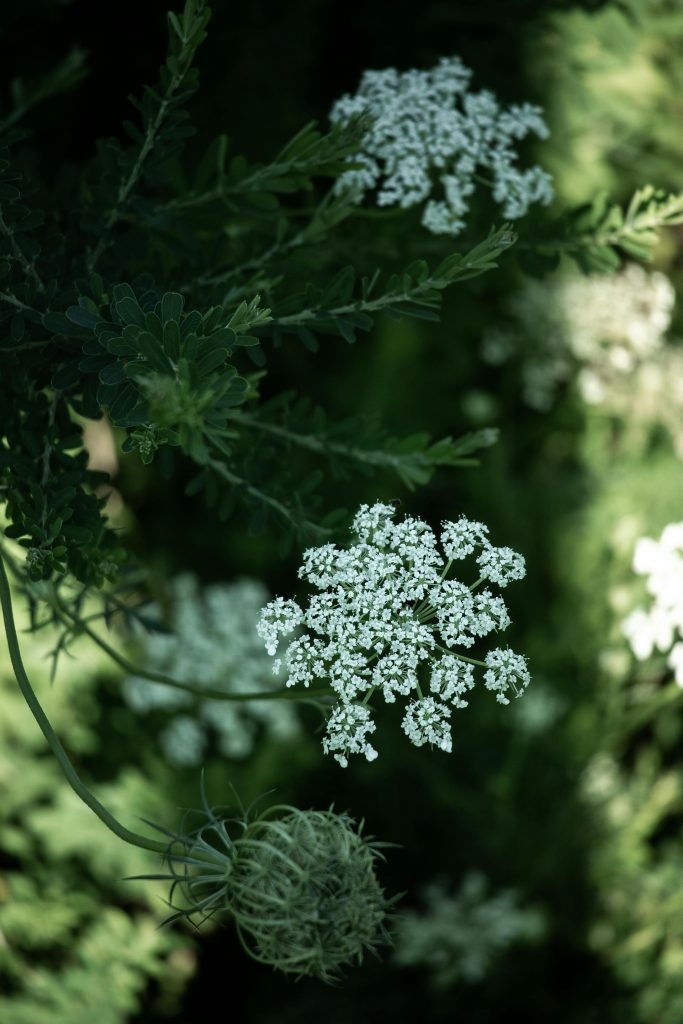Angelica archangelica, often simply referred to as Angelica, is a captivating plant steeped in lore and tradition. Its towering height, lush green leaves, and distinctive starburst flowers make it a standout in any garden. But beyond its physical beauty, Angelica carries a fascinating history.
Named after angels and touted as an archangelic plant, it has been revered for its potent medicinal properties and its rich significance across different cultures. This extraordinary plant truly offers a blend of beauty, history, and utility.
Angelica archangelica holds a unique place in the tapestry of various cultures, symbolizing different things to different people. For some, it’s a plant of celestial beings, while for others, it’s a potent healing herb. Its presence is deeply rooted in folklore, medicine, and spiritual rituals, transcending geographical boundaries.
The diversity in its interpretation and use underscores the influence of shared human experiences with the natural world, making Angelica more than just a plant, but a testament to the interconnectedness of culture and nature.
Origin and History
Angelica Archangelica, a majestic plant, thrives remarkably in the wild, particularly in the cool, damp conditions of the Northern Hemisphere. Its preference for rich, moist soil and areas of partial shade allow it to flourish, creating an impressive sight with its towering height and lush foliage.
From the riverbanks of Scandinavia to the frigid landscapes of Iceland, this resilient plant stands tall, a testament to its adaptability and strength. Its natural habitat is as intriguing as its history, further contributing to the mystical allure that surrounds this ‘angelic’ plant.
Delving into the historical uses and significance of Angelica Archangelica, we uncover a fascinating narrative that intertwines with human history. This ‘angelic’ plant has been a staple in various cultures for centuries, its uses as diverse as the landscapes it graces. From being a potent remedy in traditional medicine to symbolizing protection and healing in folklore, its influence is widespread.
The plant’s allure lies not only in its physical beauty but also in its rich past that echoes our shared human experiences with the natural world.
Angelica in Folklore
Immersed in mystique and legend, Angelica Archangelica features prominently in numerous tales and folklore. Revered for its celestial connection, the plant is steeped in stories about its divine origin and angelic protection. From tales of it being named by an angel who revealed its medicinal properties in a dream, to legends of its power to ward off evil spirits and witches, the narratives surrounding Angelica are as captivating as the plant itself. This rich tapestry of stories enhances the allure of Angelica, making it not just a plant, but a significant symbol in cultural lore.
One popular legend involves a plague that was devastating Europe. It is said that an angel appeared in a monk’s dream and revealed to him that Angelica archangelica could cure the plague. The monk used the plant, and the plague was indeed cured. From that point forward, the plant was associated with angels and given the name “archangelica” to commemorate the angel who had revealed its divine properties.
The enchanting connection of Angelica Archangelica to angels is an intriguing aspect of its rich history.
Named “archangelica” as an homage to the celestial beings, the plant is said to have received its name from an angel who revealed its medicinal properties in a dream. This divine intervention associated the plant with angelic protection and healing, casting it in a revered light.
Such an angelic connection underscores the plant’s significance and adds to its mystical allure, making it more than just a plant, but a symbol of divine intervention and celestial blessings.
Medicinal Uses
Angelica archangelica has played a significant role in traditional medicine for centuries, prized for its diverse health benefits. Known for its potent healing properties, it has been used to aid digestion, alleviate respiratory issues, and combat fever.
Its roots and seeds are often used in teas or tinctures for their reputed benefits to heart health and its potential to relieve anxiety. Additionally, it’s been valued for its purported ability to improve skin health and boost the immune system.
This extraordinary plant’s medicinal uses, steeped in traditional knowledge, underscore its status as more than just a garden staple but a versatile healer.
Modern research continues to explore the potential health benefits of Angelica archangelica, shining a light on this historical healer with a new scientific lens.
Recent studies have begun to validate its traditional uses, with evidence supporting its potential as a digestive aid, an immune booster, and a source of heart-healthy compounds. Some promising research has even delved into its potential role in stress and anxiety relief, reflecting its historical use for calming the mind.
As science progresses, we can look forward to more discoveries that continue to unravel the medicinal mysteries of this truly ‘angelic’ plant.
As we conclude our exploration of Angelica Archangelica, we’re reminded of the profound connections between humans and the natural world. Our histories, cultures, and traditions are deeply intertwined with the flora around us, and by understanding these plants, we gain a richer understanding of ourselves.
Angelica Archangelica is but one example of this powerful synergy, a testament to the enduring allure of nature and its influence on our shared human journey.
Intrigued by the rich history of Angelica Archangelica?
This is just the tip of the iceberg. There is a world of fascinating plants out there, each with its own unique story, intertwining with human history and culture. Dive deeper into the world of botany, and you’ll find a treasure trove of captivating tales and lore, medicinal uses, and deep cultural significance. So why wait? Start exploring today, and let the world of plants enrich your understanding of nature and our shared human experience.



